Explore Massachusetts Farms and Fresh Flavors
Ice cream, maple syrup, oysters, and a rainbow of produce are among the ingredients for a locavore adventure for all ages.
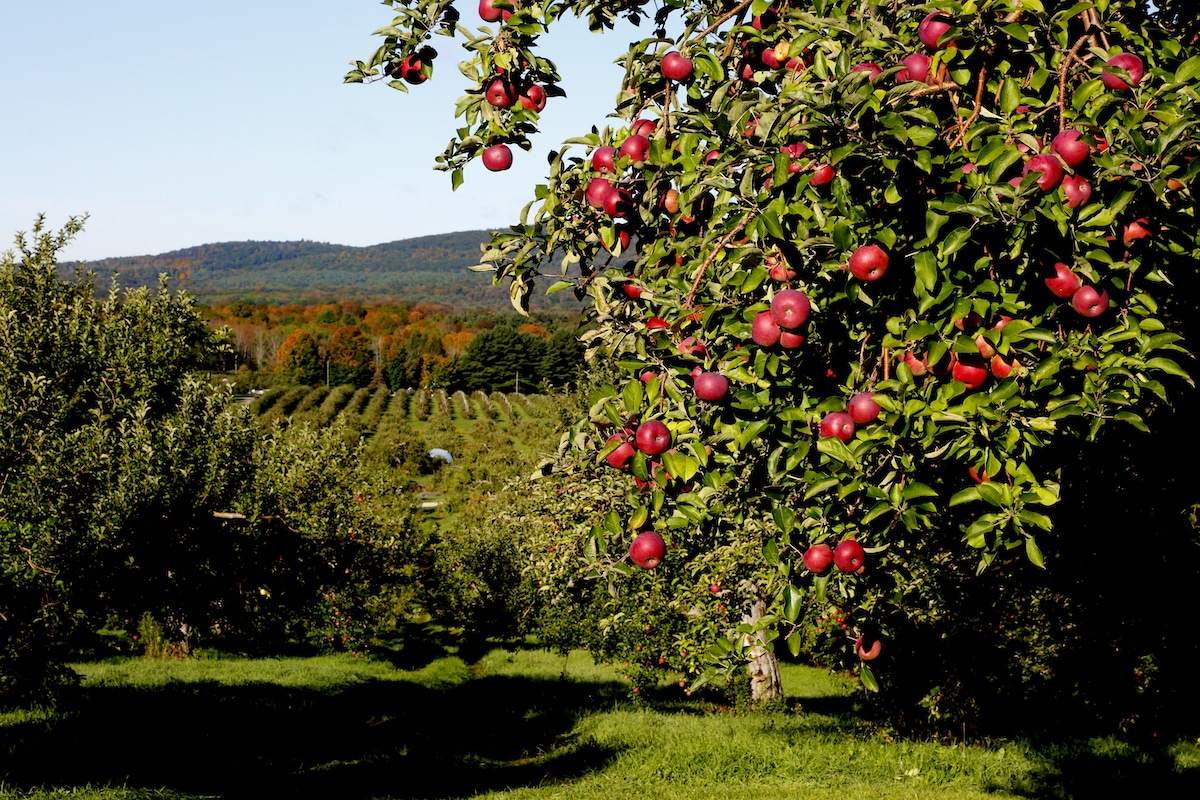
Turning leaves aren’t the only showstoppers when fall comes to Massachusetts, as orchards filled with red and gold apples brighten the landscape.
Photo Credit : Massachusetts Office of Travel & TourismBy Andrew Collins | Sponsored by the Massachusetts Office of Travel & Tourism
Nicknamed the Bay State, Massachusetts has one of nature’s most awe-inspiring food sources, the Atlantic Ocean, right on its doorstep. But heading west from the coast into river valleys and hilltop villages reveals a centuries-old agricultural scene whose bounty is just as delicious and diverse. Dairy farms with herds of sleek Holstein and Jersey cattle dispense the creamiest cheese, milk, and ice cream. Orchards and other produce growers offer locavores the chance to stock up on apples, berries, and vegetables at peak freshness.
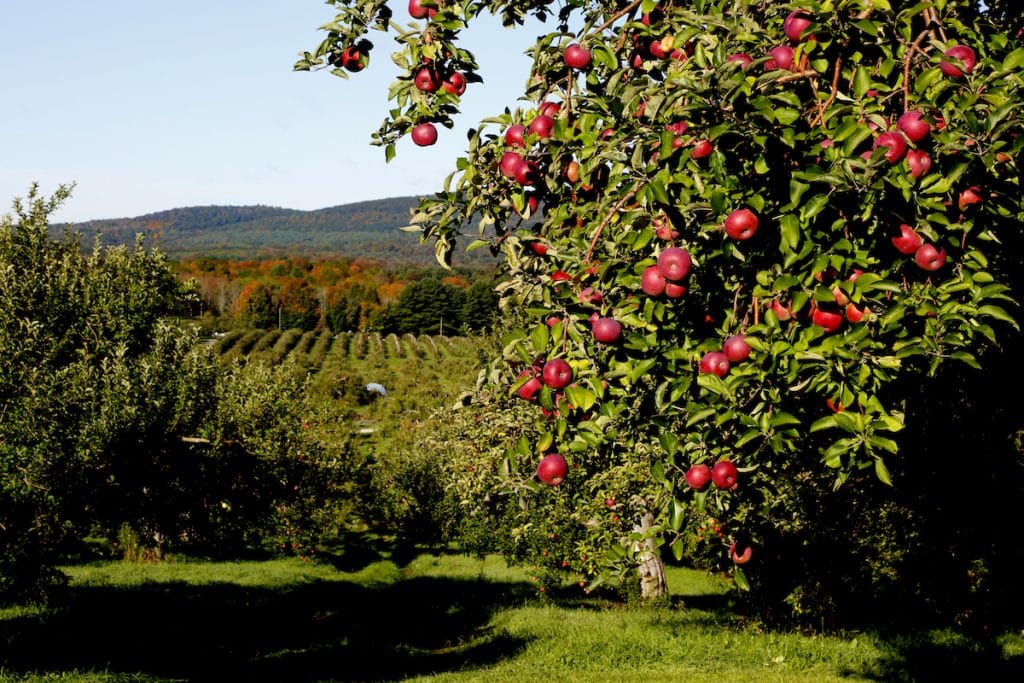
Photo Credit : Massachusetts Office of Travel & Tourism
Often owned by the same family for generations, many of these pastoral spots welcome visitors with farm markets, barnyard animals, kids’ entertainment, and guided tours. It’s an invitation for folks of all ages to have fun while learning about the benefits of sustainable agriculture and, of course, to feast on local food. Here’s just a sampling to whet any visitor’s appetite.
Dairy Delights
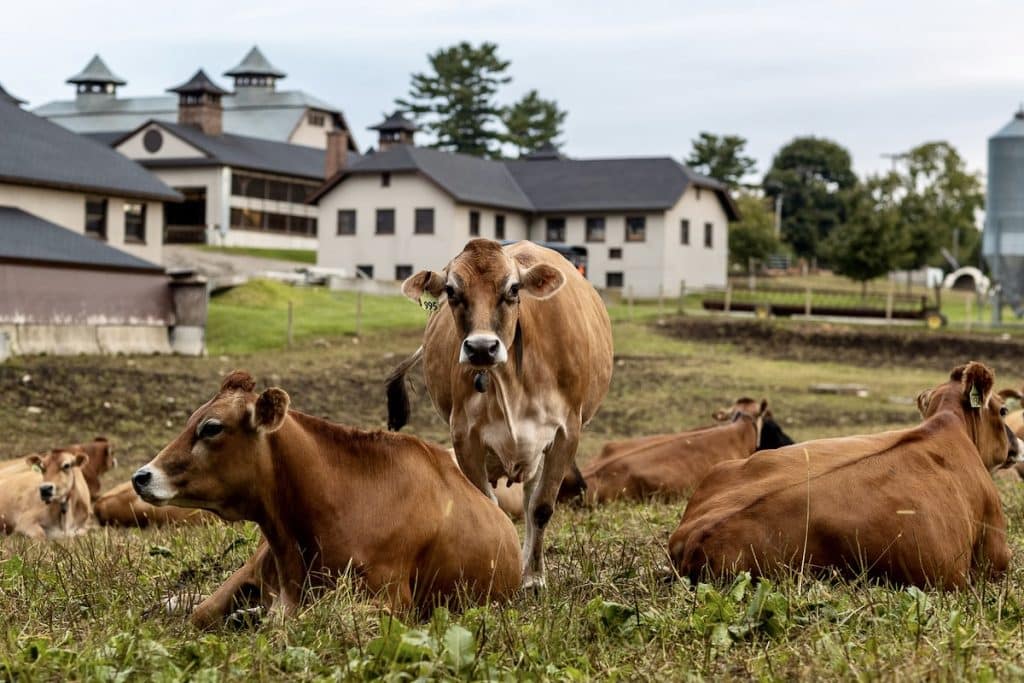
Photo Credit : Linda Campos
Just a few years after establishing the Plymouth Colony in 1620, the Pilgrims brought dairy cows over from Europe, laying the groundwork for a vital part of Massachusetts’s agricultural scene. More than 100 dairy farms thrive in the Commonwealth today, with many selling their milk, yogurt, cheese, and ice cream directly to eager customers.
In 2024, the state went all in on the sweetest of treats as it debuted the Massachusetts Ice Cream Trail, which highlights farms and scoop shops whose ice cream is made with milk, cream, or both from Massachusetts dairies. Ice cream lovers can single out a few favorites to try from the list of 100-plus locations, or plan a road-trip pilgrimage to fit in as many as they can. Either way, they’ll be satisfying their sweet tooth while supporting the hard-working farmers who provide all that fresh milk and cream, along with ingredients like strawberries, peaches, and raspberries.
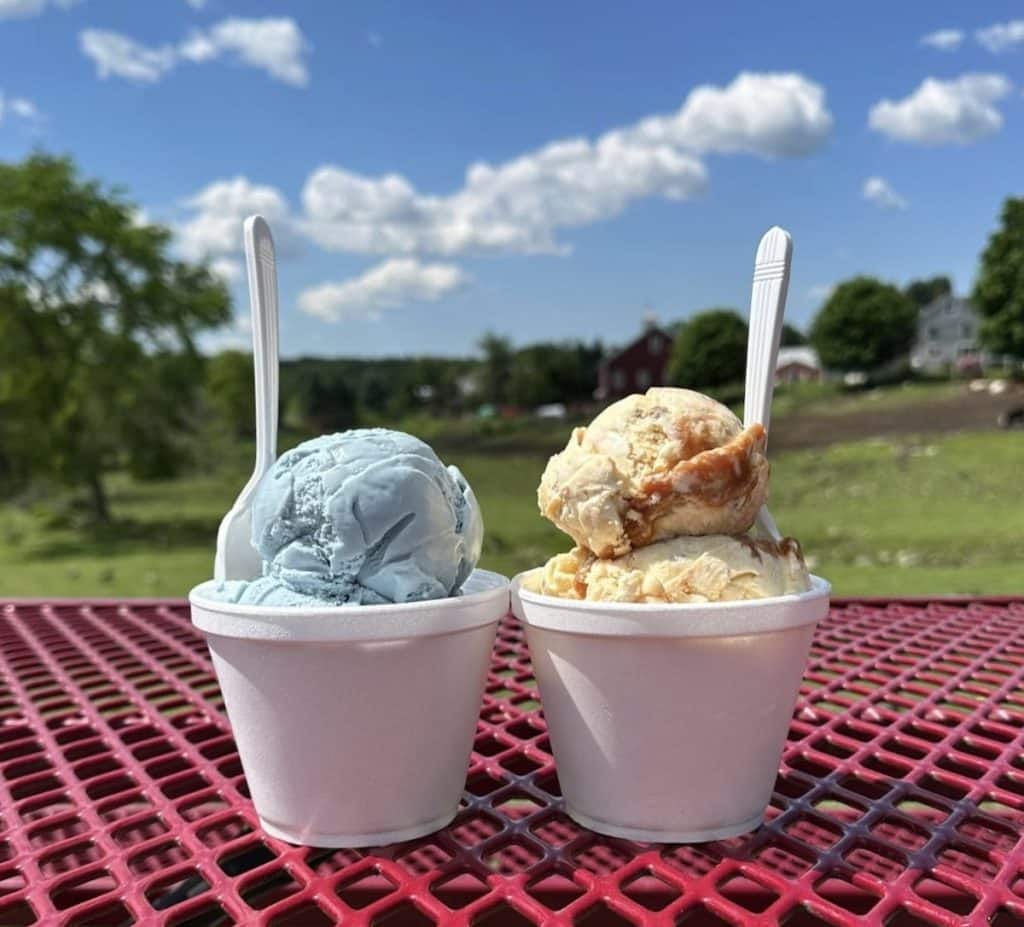
Photo Credit : Rota Spring Farm via Facebook
Stops on the Massachusetts Ice Cream Trail include Middleton’s Richardson’s Farm, a working dairy farm that dates back some 300 years, and Smolak Farms in North Andover, an innovative agricultural tourism destination that offers an ice cream stand, bakery, and farmstand; a playground and farm animals for the kids; and a variety of special events. Sprawling High Lawn Farm in the Berkshires village of Lee earns raves for classic flavors such as cookies & cream as well as seasonal specials like lemon poppy seed. At Sterling’s Rota Spring Farm, which promises “a herd of flavor in every scoop,” you can choose from more than 50 kinds of premium ice cream — perhaps the Red Raspberry Rage, studded with chocolate-covered raspberry truffles? From Flayvors of Cook Farm in the Pioneer Valley to Sundae School on Cape Cod, the list of great ice cream makers in Massachusetts is as varied as the landscapes they call home.
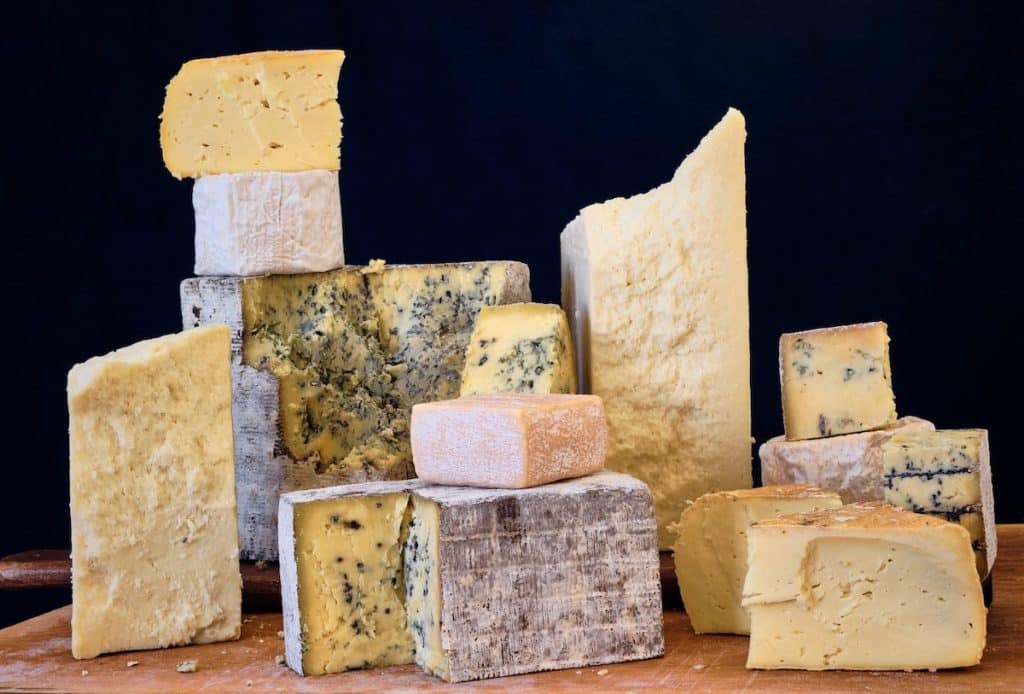
Photo Credit : Molly Glasgow
If cheese is what you’re after, Massachusetts’s dairy farms have you covered there, too. The Commonwealth boasts an array of rich and complex artisanal cheeses, such as freshly smoked Gouda from Smith’s Country Cheese in Winchendon, zingy blue cheese from The Grey Barn on Martha’s Vineyard, and even “toma”-style cheese inspired by the flavor of the Italian Alps at Cricket Creek Farm in Williamstown. These and many other cheese-centric dairies have retail outlets right on the farm — which means visitors might catch a glimpse of the grazing cows themselves while shopping for the tasty end results.
Prime Pickings
Side by side with Massachusetts dairy producers are hundreds of farms throughout the state that cultivate other kinds of bounty that spring from the earth. From sweet corn to tomatoes to apples and more, their wares are ripe for sampling at the Commonwealth’s 200-plus farmers markets — as well as, in many cases, at the farms themselves.
Visiting an actual farm is a wonderful way, especially for kids, to see where and how food is raised (and maybe even visit with some adorable barn animals). These farms often have pick-your-own harvesting of fruit and other crops, or generously stocked farmstands and shops, or both. At the seventh-generation Apex Orchards in Shelburne, apples and peaches are big draws, along with some of the area’s most beautiful views. Russell Orchards offers fruit picking on its 120-acre property in Ipswich, as well as a bakery, winery, and animal barnyard. At South Natick’s Lookout Farm, which presents family entertainment and occasional concerts, an afternoon of picking fruit and navigating the corn maze might conclude with a glass of farm-crafted hard cider or beer.
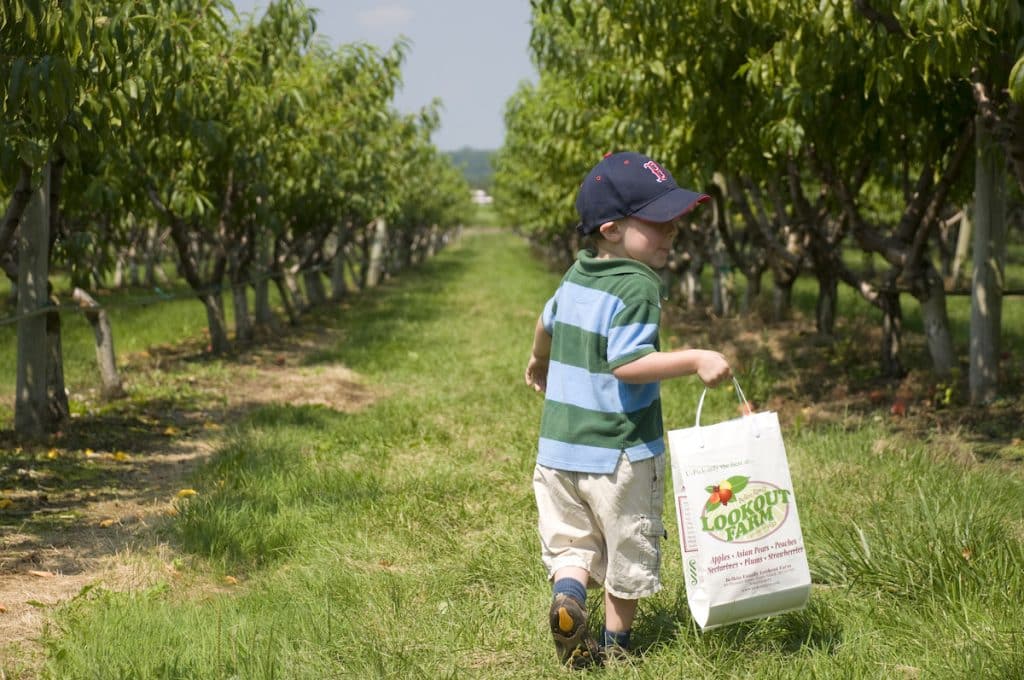
Photo Credit : Massachusetts Office of Travel & Tourism
Other showcases of seasonal abundance include Parlee Farms in Tyngsboro, where you can pick up some strawberry shortcake and blueberry doughnuts at the on-site Mary’s Country Kitchen; Nantucket’s Bartlett’s Farm, which gives guided PYO veggie and flower tours on its stunning island property; and Cider Hill Farm in Amesbury, which grows more than 60 varieties of apples alongside other crops, crafts its own award-winning ciders, and runs everything largely on wind and solar energy.
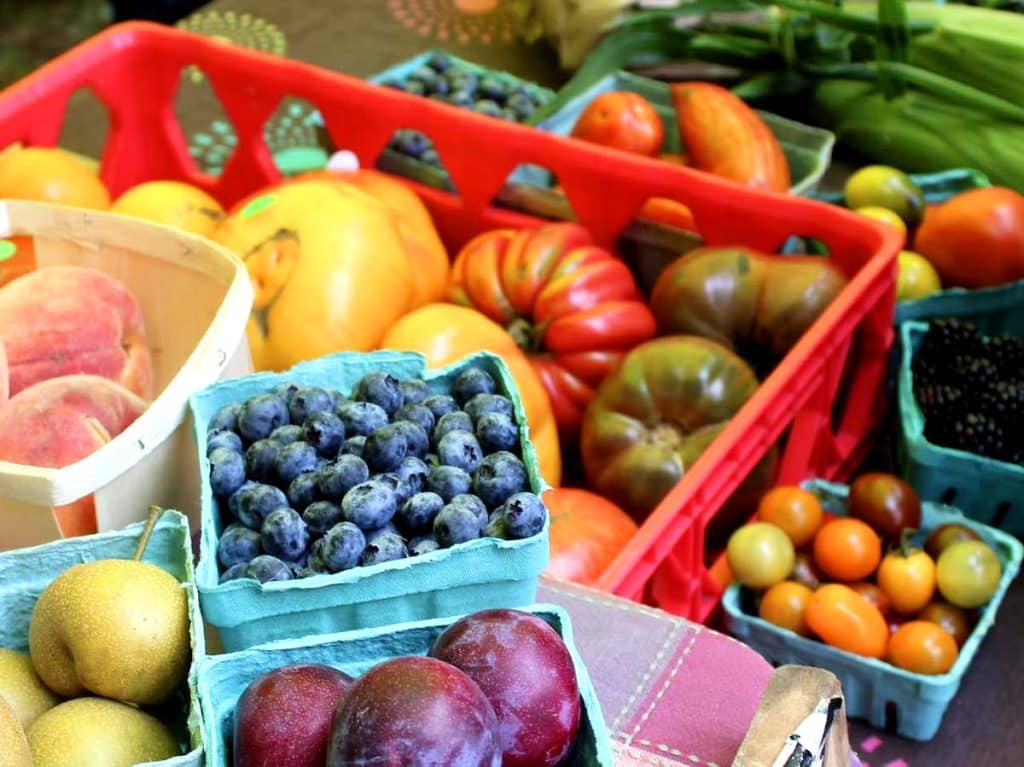
Photo Credit : © Sustainable CAPE 2024
At Massachusetts farmers’ markets, meanwhile, you can fill your bags with tasty produce as well as baked goods, gourmet snacks, and handcrafted gifts and artwork. The nonprofit Mass Farmers Markets, which runs five Boston-area markets, provides a handy farmers’ markets map to guide local-food adventures. Seaside options include Cape Cod markets run by Sustainable CAPE in Truro and Provincetown, the Nantucket Farmers and Artisans Market, and the North Shore’s Newburyport Farmers’ Market. Popular with students and university staff in the central “Five Colleges” area, the Northampton Farmers’ Market goes beyond a plentiful offering of farm-grown foods to include perennials, houseplants, and bouquets. In western Massachusetts, the Williamstown Farmers’ Market is strong on arts and crafts, and the nearby Pittsfield Farmers’ Market is run by teens through Roots Rising, an organization focused on empowering young people and building community.
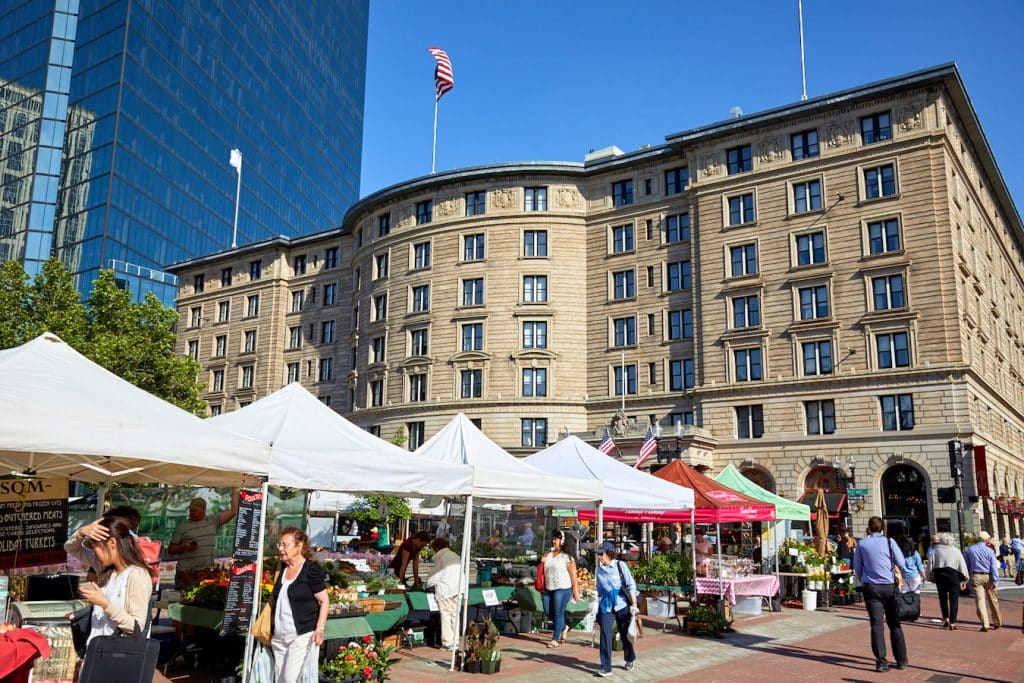
Photo Credit : Mark Fleming
The Commonwealth’s bigger cities host some outstanding events, too, including Mass Farmers Markets’ new Fish & Farm Market at Boston Fish Pier and bustling Copley Square Farmers’ Market in Boston, and the Farmers Market at Forest Park in Springfield. And if you happen to be at the Boston Public Market on just the right day in August, you can watch as winners are announced during the always-popular Annual Massachusetts Tomato Contest.
Heritage Flavors
Among the array of locally grown products you can find across Massachusetts, three uniquely regional foods stand out for their historical significance and deliciousness: maple syrup, cranberries, and oysters.
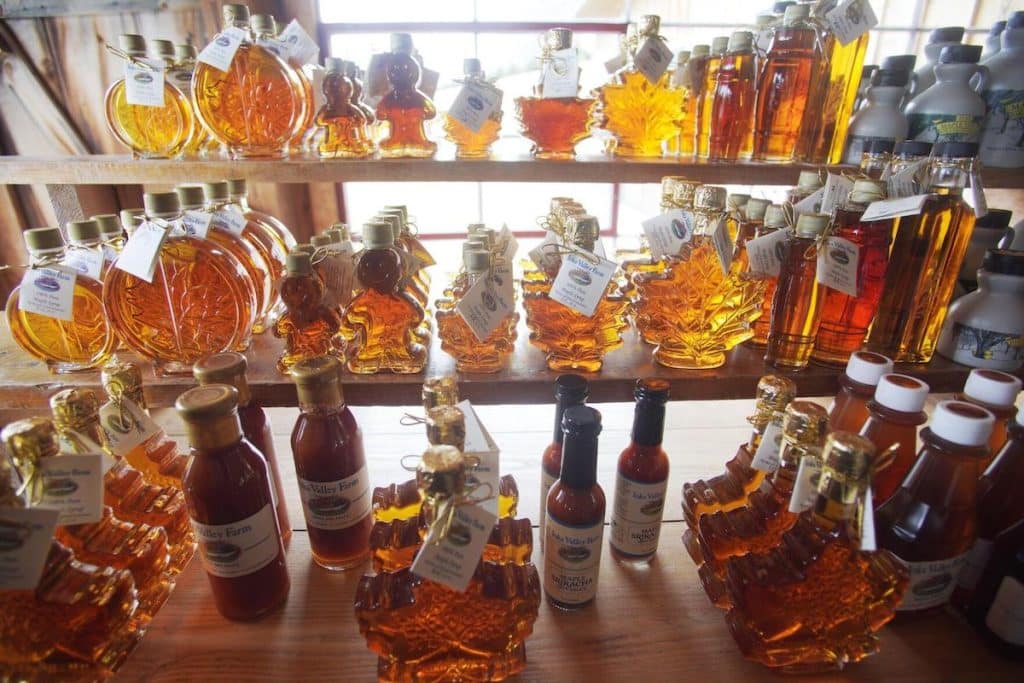
Photo Credit : Ben Garver/The Berkshire Eagle
A food whose history goes back to indigenous peoples, maple syrup became a staple among European settlers in the region we now know as Massachusetts — and seeing how it is made is one of the Commonwealth’s most fascinating agricultural attractions. During sugaring season (roughly mid-February to early April), you can watch as freshly collected maple sap is boiled into syrup at places like Hancock’s Ioka Valley Farm, where you can also sample the sweet elixir drizzled over pancakes and waffles at the farm’s on-site café. North Hadley Sugar Shack in North Hadley likewise opens its sugaring operation to the public in early spring, while it sells syrup and other maple products, from salad dressings to candies, all year round. Another way to experience some maple magic is with Mass Audubon, which offers sugaring interpretive programs at a number of its locations, including Drumlin Farm in Lincoln and Boston Nature Center in Mattapan.
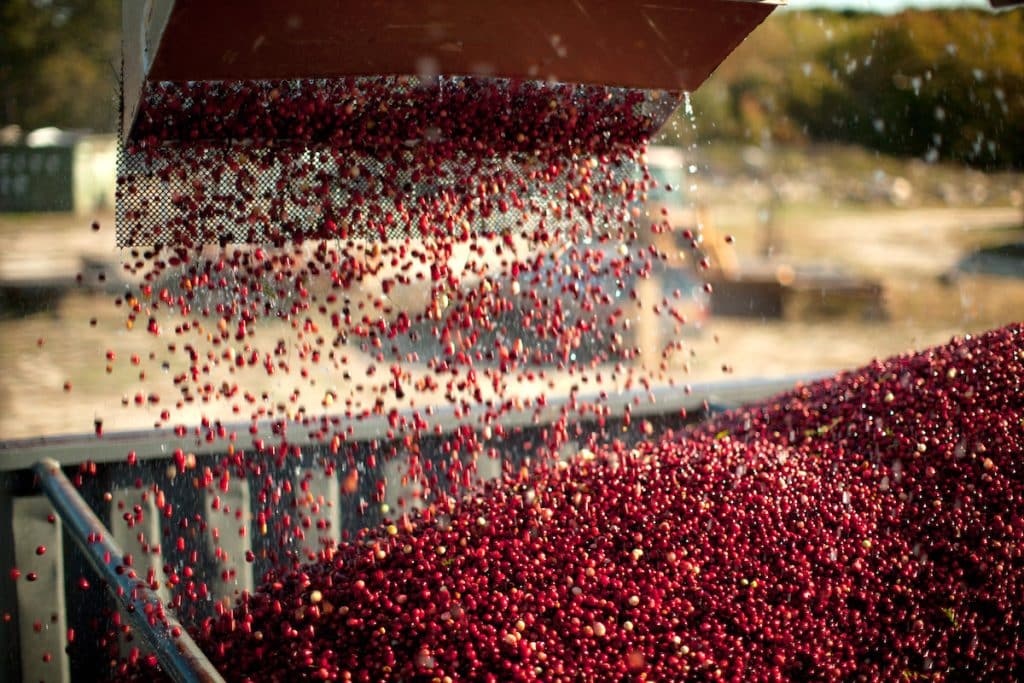
Photo Credit : Massachusetts Office of Travel & Tourism
Harvested in late fall, cranberries were first cultivated in 1816 in Dennis, Massachusetts. These days, there are more than 300 cranberry growers in the southeastern part of the state, whose roughly 13,000 acres of crops make Massachusetts the third-largest cranberry-producing region in the world. Learn more about this radiant red superfood through the Cape Cod Cranberry Growers’ Association, which lists farms and shops selling fresh cranberries as well as specific places that offer bog tours, such as Red Meadow in Carver and Annie’s Crannies in Dennis, the town where cranberry farming all began.
Oysters have been a fixture on the local-food scene for generations, harvested both by indigenous peoples and by later arrivals. So impressed was explorer Samuel de Champlain by the local oyster beds that he named what is now Wellfleet Harbor “Port aux Huitres” (Port of Oysters). Today, oysters are the most valuable species in the state’s aquaculture portfolio, with an annual harvest whose worth was recently estimated at $30 million.

Photo Credit : Colleen Blair
Operating mostly around Cape Cod and the South Shore, the Commonwealth’s oyster farms include Island Creek Oysters, which offers seasonal tours of its farm and operates a raw bar year-round, with a patio overlooking Duxbury Bay. Seafood enthusiasts can also take a private oyster farm tour with Martha’s Vineyard’s Cottage City Oysters, which leads a one-hour “floating raw-bar experience“ through its oyster beds.
To discover more inspiration for visiting Massachusetts farms and discovering their fresh flavors, click here.


